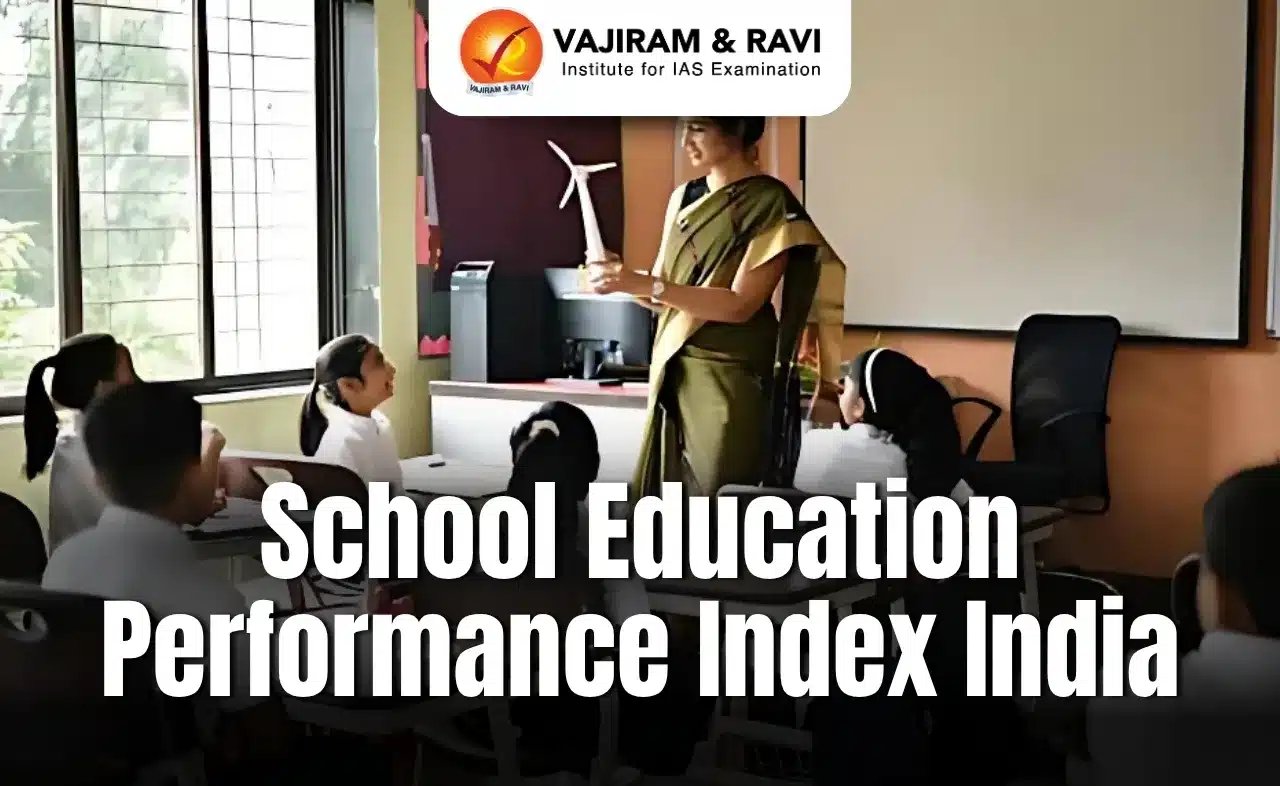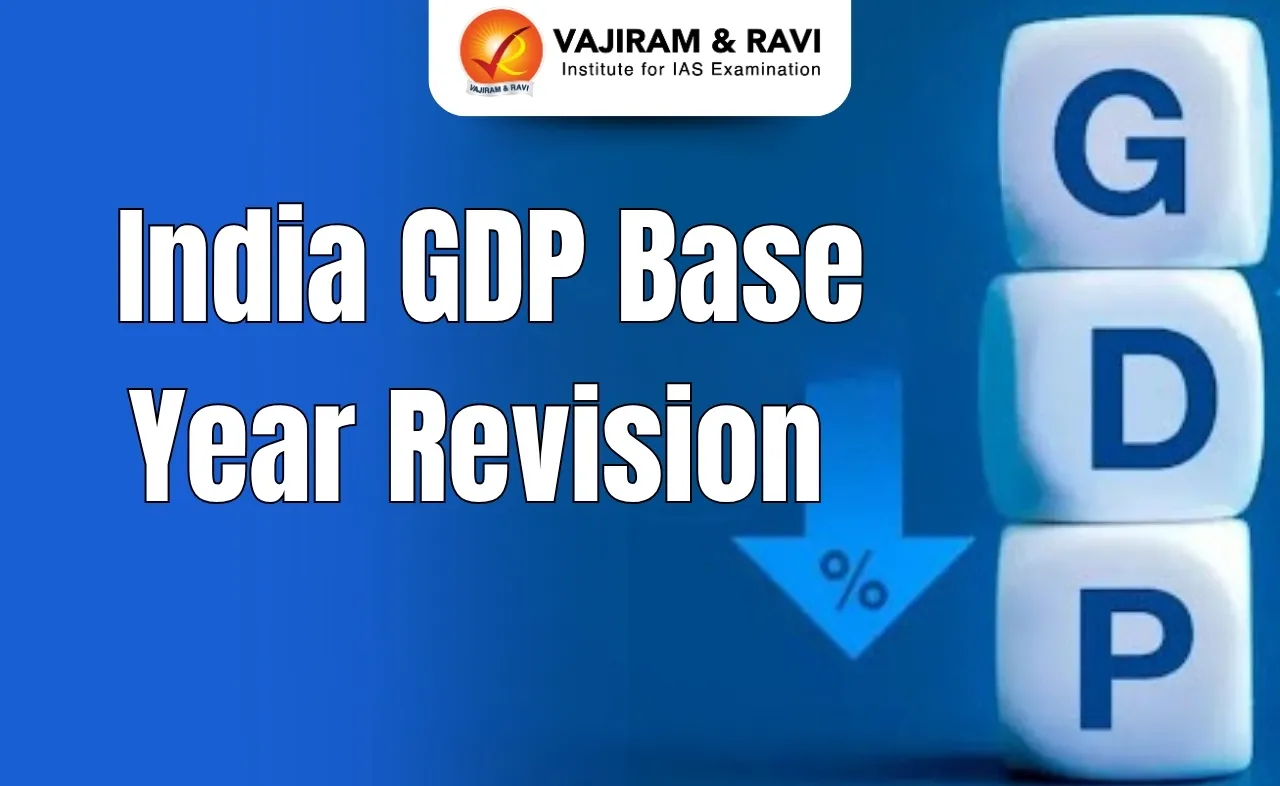Performance Grading Index Latest News
- Chandigarh has been adjudged the best performer in school education for the academic year 2023-24, as per the Performance Grading Index (PGI) 2.0 Report released by the Union Ministry of Education.
Performance Grading Index 2.0: An Overview
- The Union Ministry of Education released the Performance Grading Index for Districts (PGI-D) 2.0 for the academic year 2023-24 on June 18, 2025.
- This upgraded framework assesses school education quality across States and Union Territories (UTs) on a scale of 1,000 points.
- It measures performance across multiple domains such as:
- Learning Outcomes,
- Access,
- Infrastructure,
- Equity,
- Governance, and
- Teacher Education
- The PGI-D 2.0 aims to enable data-driven policymaking, promote evidence-based interventions, and encourage States/UTs to improve learning environments and outcomes in schools.
Top Performers: Chandigarh, Punjab, and Delhi
- Chandigarh secured the highest rank this year, becoming the only State/UT placed in the fifth-highest grade, Prachesta-1, with a score of 719 out of 1,000.
- To attain this grade, a region must score between 701-760. The city showed balanced strength across domains such as learning outcomes, infrastructure, and equity.
- Following Chandigarh, ten other States and UTs were placed in Prachesta-3 (scores between 581-640), including:
- Punjab, Delhi, Gujarat, Kerala, Odisha, Goa, Haryana, Maharashtra, Rajasthan, Dadra and Nagar Haveli & Daman and Diu
- These regions demonstrated consistent performance in indicators such as access to education, infrastructure development, and educational governance.
Bottom-Ranked and Lagging States
- Meghalaya scored the lowest in the PGI 2.0 with 417 points and was the only State placed in the lowest performance level, Akanshi-3 (401-460 score bracket).
- Other States such as Bihar, Assam, Telangana, Jharkhand, Tripura, Manipur, Chhattisgarh, and the Northeastern States (Nagaland, Mizoram, Arunachal Pradesh) also performed poorly, falling into the Akanshi-2 category (scores between 461-520).
- These States struggled primarily with issues related to student retention, basic infrastructure, and governance-related challenges.
Middle Performers and Average Scores
- Fourteen States and UTs, including Tamil Nadu, Karnataka, West Bengal, Himachal Pradesh, and Uttar Pradesh, were placed in the Akanshi-1 category, scoring between 521-580.
- These regions performed moderately well but still have considerable scope for improvement, especially in learning outcomes and teacher training.
States Showing Highest Improvements
- The PGI 2.0 also highlighted the States that made the most significant improvements over the previous year (2022-23):
- Bihar and Telangana showed the most progress in access to education, with enhancements in student enrolment, retention rates, and transition to higher grades.
- Delhi, Jammu & Kashmir, and Telangana made notable improvements in school infrastructure, with better availability of drinking water, electricity, clean toilets, and digital learning tools.
- These gains demonstrate the effectiveness of targeted interventions and public investments in school systems in underperforming regions.
PGI Methodology and Grading System
- The PGI 2.0 assigns scores based on weighted indicators. For instance, if the indicator “proficiency in Mathematics in Grade 5” carries a weightage of 20 and a State has 50% of students achieving the minimum proficiency, the score awarded is 10 (20 x 0.5).
- This method ensures that the quality of education is measured holistically, accounting for both outcomes and enabling conditions.
- Despite progress, no State or UT has yet achieved the highest performance grade, Utkarsh, which requires a score above 90% (761-1,000 points).
- This indicates the need for accelerated reforms across the country.
Performance Grading Index FAQs
Q1: Which State/UT topped the PGI 2.0 school education index for 2023–24?
Ans: Chandigarh secured the highest rank with a score of 719 and was placed in the Prachesta-1 grade.
Q2: What is the score range for Prachesta-1 in the PGI index?
Ans: Prachesta-1 includes States scoring between 701 and 760 out of 1,000 points.
Q3: Which States showed the most improvement in access to education?
Ans: Bihar and Telangana recorded the highest improvement in access indicators.
Q4: Which State was the lowest performer in the PGI 2.0 for 2023–24?
Ans: Meghalaya was the lowest scorer with 417 points, placing it in Akanshi-3.
Q5: How many States improved their scores in the PGI 2.0 compared to the previous year?
Ans: A total of 24 States and Union Territories improved their scores over the previous year.




